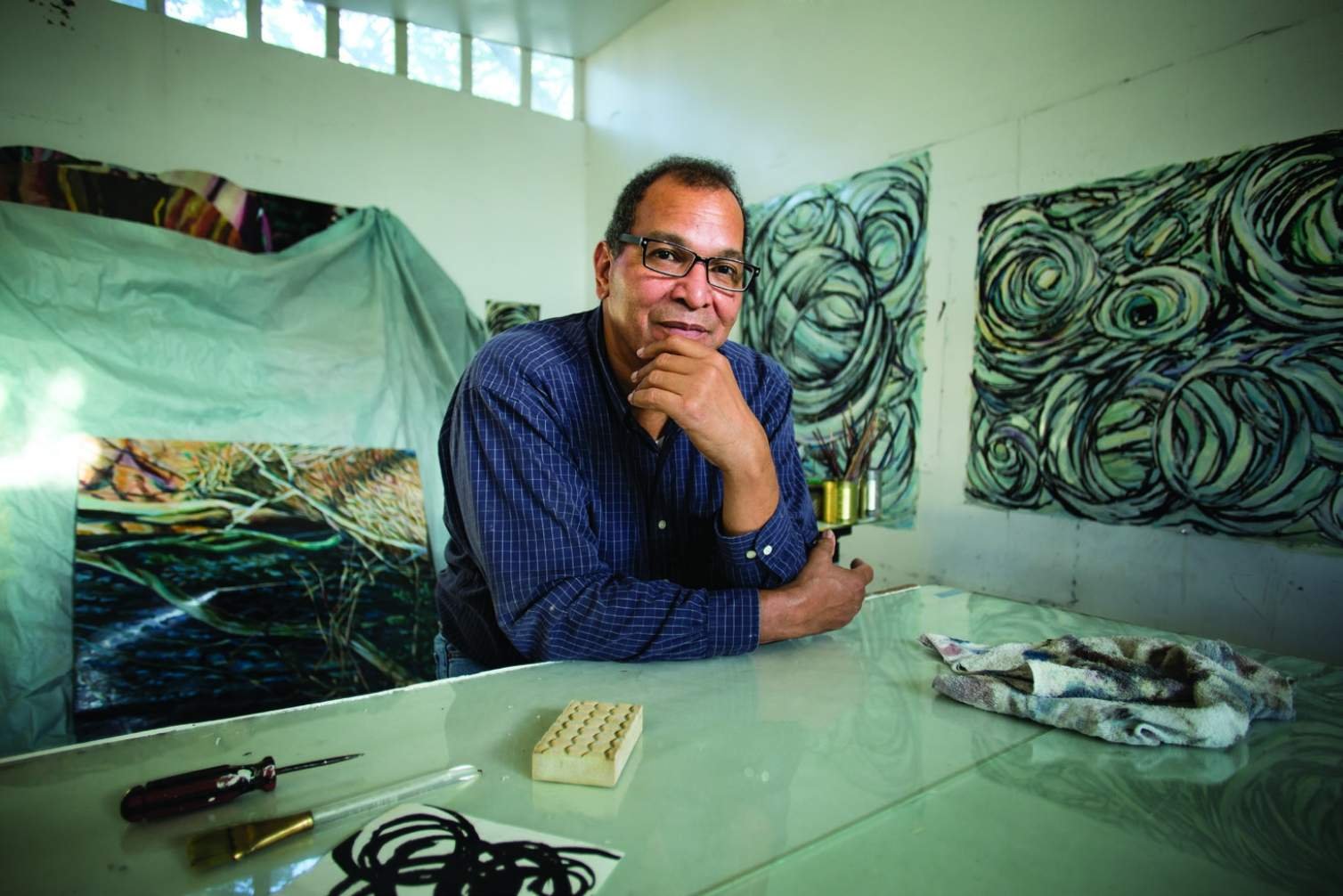Questions W/ Ron Bechet
A glimpse into the world and work of artists, collaborators, and friends of Prospect New Orleans through unfiltered and contemplative conversations.
Image courtesy of Ron Bechet and the Joan Mitchell Foundation
Ron Bechet is a New Orleans-based painter and accomplished artist, whose work has been showcased both nationally and internationally. He holds the position of Victor H. Labat Professor of Art in the Department of Art at Xavier University of Louisiana. Ron has been involved in various capacities at Prospect, including being an artist for Prospect.5: Yesterday we said tomorrow curated by Susan Brennan Co-Artistic Directors Diana Nawi and Niama J. Keith. As we move into our sixth iteration of Prospect, Ron has joined our curatorial advisors team under the leadership of Susan Brennan Co-Artistic Directors Miranda Lash and Ebony G. Patterson.
We had the opportunity to ask Ron a few of our core questions related to our sixth triennial and talk a bit about his creative process and connection to New Orleans.
Prospect New Orleans: What draws you to the histories, legacies, and communities of New Orleans?
Ron Bechet: I am of this place; I draw on it. To paraphrase Maya Angelou a bit, “I am the dream and hope of the enslaved.” They knew my name before I existed. I remember them.
P: Which artists and/or thinkers have influenced your creative practice?
RB: People that have influenced my thinking and therefore my work have been varied. Like many, I have been drawn to the writing of James Baldwin; he has been a guide post. I am influenced by Kalamu ya Salaam, Jack Whitten, and Larry Walker.
It is also a given that John Scott and Willie Birch have been major influences on understanding what the practice of making art is about.
P: You shared a few images with us, why are they special to you?
Image courtesy of Ron Bechet.
RB: This images is of Lincoln Beach in New Orleans East. The occasion is Michaela Harrison performing "Whale Whispering". This beach on Lake Pontchartrain has a rich history in the Black Community and is making a comeback with the help of the community.
RB: This is the great oak tree in Congo Square. This place and tree are sacred to the Black Community and New Orleans given the Square’s history from before the history of the French (Bvlbancha) when it was a trading place. It has seen many people.
Image courtesy of Ron Bechet.
P: What are you most excited about for Prospect.6?
RB: Prospect was made to be in New Orleans for a reason. It is beginning to understand better what and how special that reason is.
P: What does it mean to speak from a place, rather than at it?
RB: Unfortunately, as visual people we often use our sight and mistake it for vision and fail to fully understand the total experience. Vision from a place is also heard and not just yours but our vision.
Questions W/ provides glimpse into the world and work of artists, collaborators, and friends of Prospect New Orleans through unfiltered and contemplative conversations. To read more conversations visits our News sections.
About Ron Bechet
Ron Bechet is a painter and art maker, and has exhibited his work nationally and internationally. He is also the Victor H. Labat Professor of Art in the Department of Art at Xavier University of Louisiana. He has been teaching over 20 years at Xavier and nearly 30 years at the college level. He holds a B.A. degree in Fine Arts from the University of New Orleans, and an M.F.A. from the Yale School of Art, Yale University. He currently serves on the Board of Trustees at the Ogden Museum and has served on other boards and commissions, such as The Joan Mitchell Foundation, Imagining America’s National Advisory Board. He has served as the first director of Xavier Art Department’s Community Arts Partnership Program and served in many arts and youth programs in the New Orleans area both as an advisor and a practitioner.



